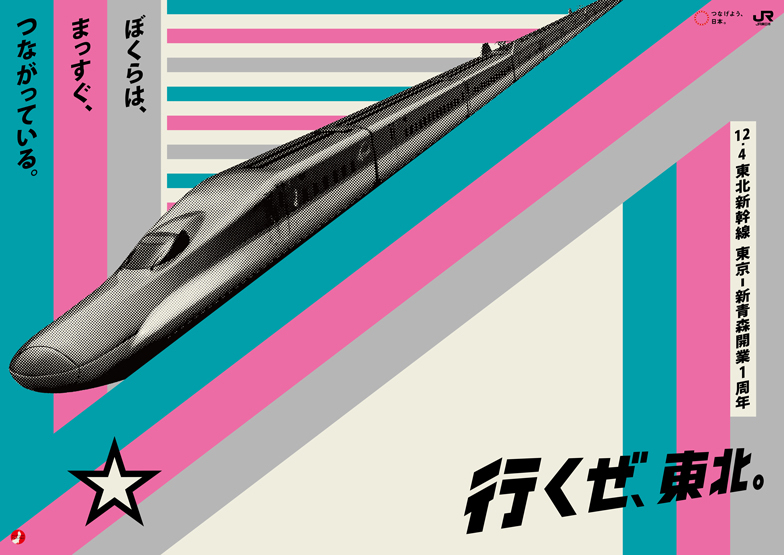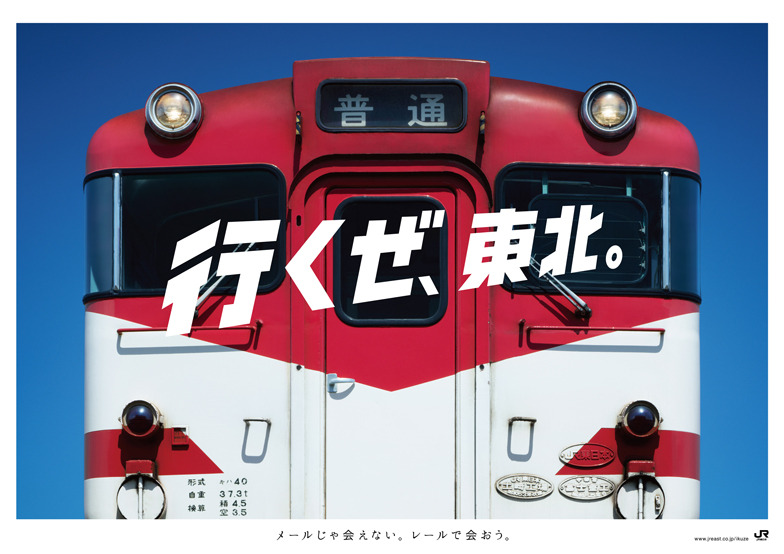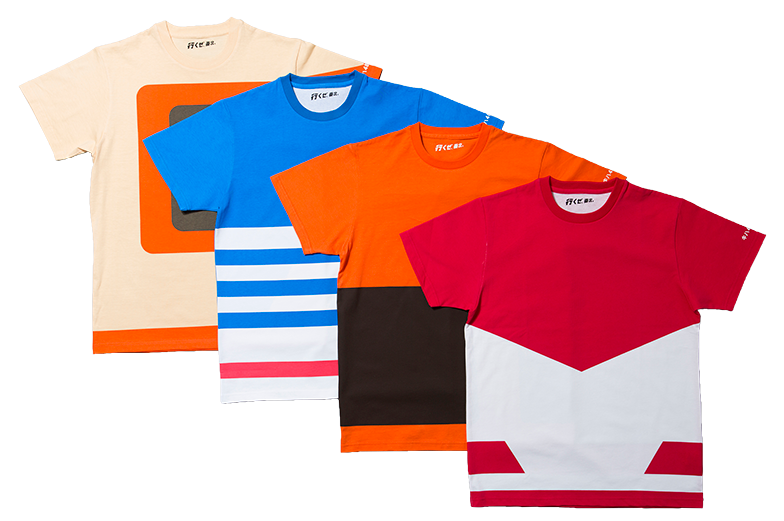——Like "Let's Go to Kyoto," destination campaigns usually try to convey the atmosphere of the destination. But this one aimed to express the essence of the railway itself.
Yagi: After the earthquake, there was a widespread "Let's support Tohoku" sentiment among companies. But as recovery progressed and more information became available, expressions naturally evolved. There should be multiple reasons to visit Tohoku. Food and beautiful scenery are one reason, but isn't traveling by train itself appealing? By focusing on the transportation itself, like we did this time, and highlighting how wonderful it is, I believe we can continually deliver fresh impressions.
But the core mindset behind "Get Back, Tohoku." hasn't fundamentally changed. Through these campaigns, we've gradually gained fans who eagerly anticipate each seasonal campaign's scenery. That's why we can't let them down. Yet, precisely because of that, I feel a bit of pressure to deliver unexpected expressions – to "betray" expectations in a good way.Since "Get Back, Tohoku." has become firmly established among everyone, we try to think of communications that cleverly leverage that. This time, making a train car the main visual was also aimed at surprising people precisely because they'd think, "They wouldn't do that for 'Get Back, Tohoku.'" It's more thrilling that way.
It's like a puzzle where I combine the client's brief with my own wild ideas.
——Yagi-san, I'd like to ask a bit about the process you go through to arrive at the final design.
Yagi: People often assume designers just think intuitively, but we actually start from marketing concepts quite often. As we develop the design from there, we consider whether the ideas we've been nurturing might fit well with the marketing concept.I always want to surprise the world. I constantly have these wild ideas—like, wouldn't people be moved by something like this? Or wouldn't this create new value? I have tons of these fantasies, unrelated to work. I have a whole drawer full of them. Then, when a client gives me a challenge, alongside deepening my research and thinking around the issue, I pull fantasies from that drawer. I try them on the challenge, thinking, "This will definitely work well here." It feels like solving a puzzle.
I believe that combination of puzzle pieces is what "design" truly is. It's like a miraculous invention. Often, these inventions happen by chance. I suspect if you try to think things through in a linear, step-by-step way, you won't arrive at an "invention." It feels like it takes those accidental encounters, those flashes of insight, those wild fantasies and leaps of imagination – only then does something truly new emerge.
——What process leads you to that final "This is it!" feeling or idea?
Yagi: That's the happiest time for a designer. Even when a design is finished, there's often still this lingering feeling that it's not ready to be released. It's about whether it logically holds together or not.Even if the expression is complete, there's often a feeling that something doesn't quite fit or is missing when measured against the client's purpose or the challenge at hand. It's during that period of wrestling with it that finding a single "word" often makes everything click into place. It's a bit hard to explain, but it's like finding the "necessity" for the client or the world. Finding that "word that proves the necessity" is what brings closure, provides an explanation, and finally gives birth to that feeling.
We art directors aren't just doing design; surprisingly, we're searching for the words that define and give meaning to the design itself. I think we devote a significant amount of effort to that. Finding that one word can make everything feel resolved.
When there are words that define "Why must we do this now, in this era?" or "Why is this expression necessary in today's world?", and when the visual makes sense alongside those words, that's when I get the feeling, "This is okay." Artists create art, craft, or even fantasies, but we might be the mediators connecting those to marketing philosophies and corporate management principles.You could say our role is to make business and management more artistic, to make them visible and accessible to people.
[ To be continued in Part 2]
*The full text is available on the Hideo Yoshida Memorial Foundation website.








